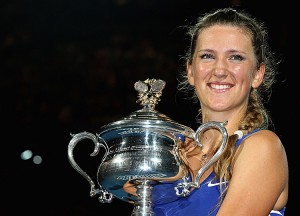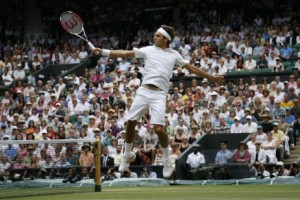Queen Victoria Azarenka: The New Novak Djokovic of the Women’s Tour? 11
Evidently, Victoria Azarenka finally got tired of waiting for her moment in the sun.
The new world No. 1 decided to take matters into her own hand in Melbourne—defeating both Kim Clijsters and Maria Sharapova consecutively to take the 2012 Australian Open crown.
Both her semifinal and final opponents had previously won the title “down under.” In fact, Clijsters was the defending Australian Open champion. Sharapova had won the title in 2008.
Azarenka’s win harkens back to the sudden rise of Novak Djokovic starting with the 2011 Australian Open when the No. 3 ranked Serb defeated No. 2 Roger Federer in the semifinals. Djokovic advanced to the finals where he defeated world No. 4 Andy Murray, claiming his second Australian Open title.
Djokovic had won his first Aussie Open back in 2008, again dismissing Federer in the semis. But after that lone slam victory three years ago—many feared the Serb would simply be another one-slam wonder.
Following his win at the 2011 Australian Open, Djokovic, of course, went on to win his next 43 matches, eventually losing in the semifinals of the 2012 French Open to Roger Federer. It took Djokovic until Wimbledon to overtake Rafael Nadal for the No. 1 ranking.
The Serb’s ascension marked the beginning of the Djokovic Era in men’s tennis and many predict the same sort of fortune for the newly crowned world No. 1 in women’s tennis.





